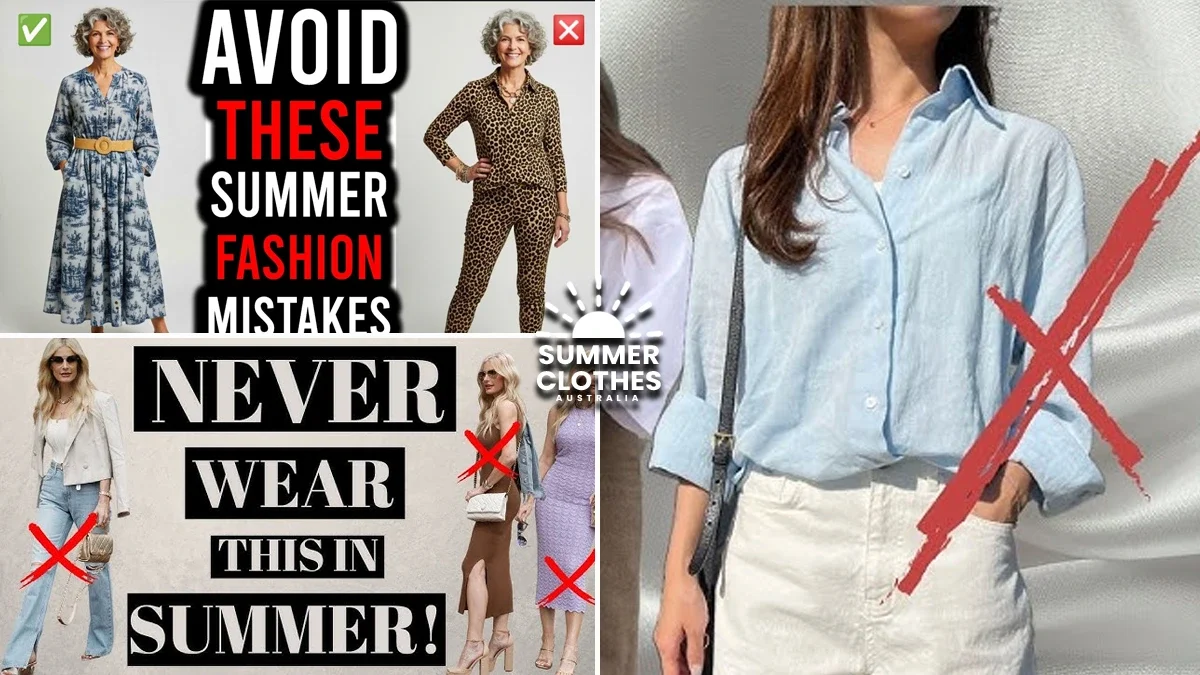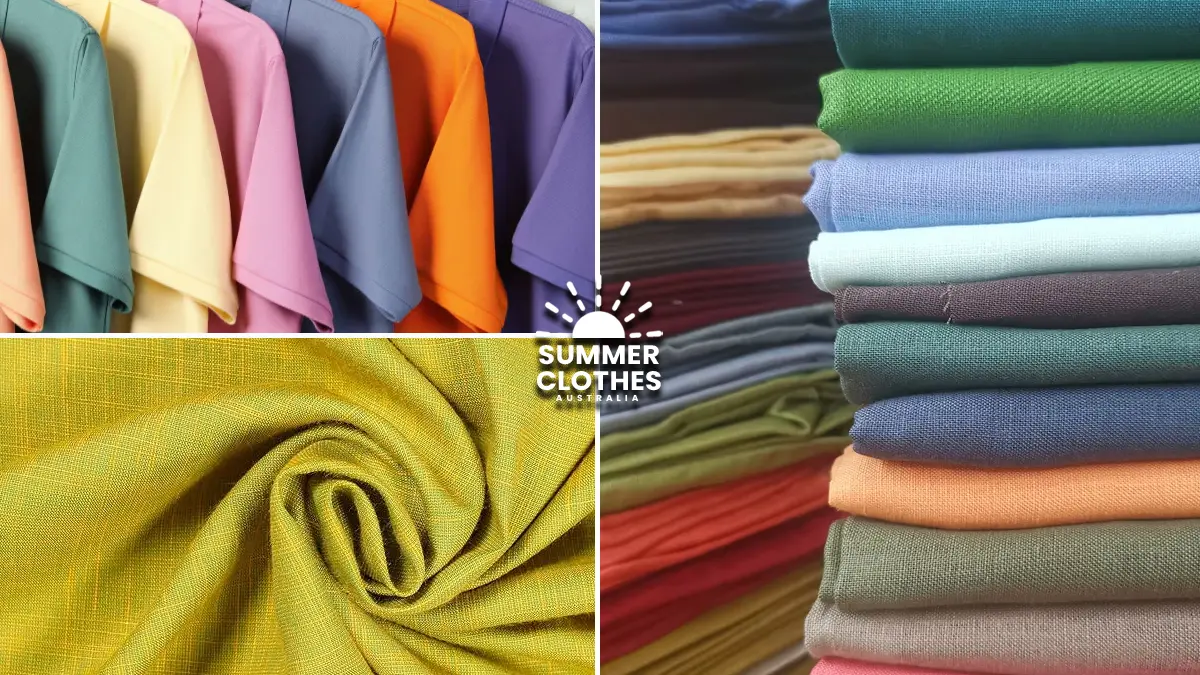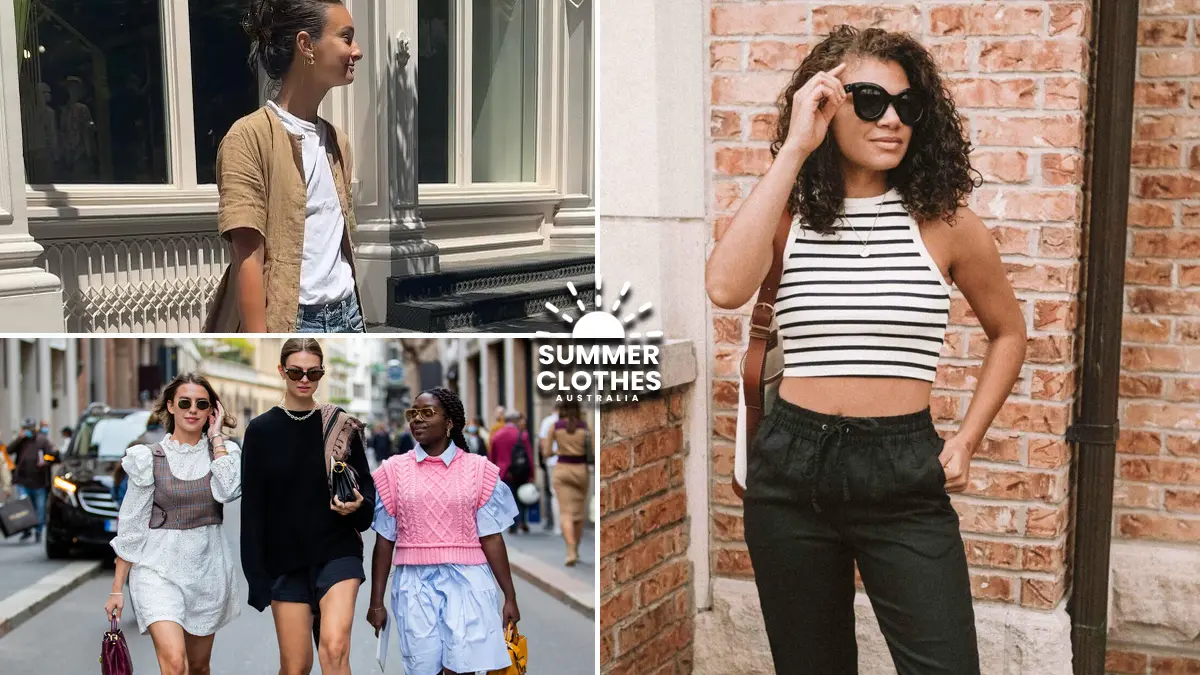When it comes to summer clothes, comfort, breathability, and versatility are essential. Yet, many fall into the trap of fashion over function, leading to overheating, discomfort, and uninspired looks. Below, we’ll explore the most common summer outfit mistakes and offer practical alternatives that help you look and feel fresh all season long.

Mistake 1: Wearing Sweat-Prone Fabrics Like Polyester
One of the biggest summer style blunders is opting for fabrics that trap heat and moisture, like polyester, acrylic, or nylon. These synthetic materials often lack breathability, causing excess sweating, irritation, and even body odor.
What to Wear Instead: Choose Natural, Breathable Fabrics
Cotton, linen, and bamboo viscose are your go-to materials. These fabrics wick away moisture, allow air circulation, and help regulate body temperature. For an elevated look, consider organic cotton tees, linen shorts, or bamboo blend sundresses that are stylish and breathable.
Mistake 2: Overlayering in Hot Weather
Layering may be essential in transitional weather, but piling on clothes in peak summer months is a major mistake. Blazers over tanks, or scarves with maxi dresses, can cause heat build-up and make your outfit feel heavy and uncomfortable.
What to Wear Instead: Light Layers and Airy Silhouettes
Opt for light layering pieces only when needed, like a sheer kimono, linen button-up, or a cropped cardigan in the evening. Choose flowy shapes that allow ventilation, such as wide-leg trousers, tiered maxi skirts, or boxy crop tops that don’t cling to the body.
Mistake 3: Dark Colors That Absorb Heat
Dressing in head-to-toe black might look sleek, but it’s not doing you any favors in summer. Dark colors absorb sunlight, increasing your body temperature and making you sweat more.
What to Wear Instead: Embrace Light and Reflective Tones
Choose whites, pastels, and neutrals like beige, sky blue, blush pink, and mint green. Not only do they reflect heat, but they also evoke a fresh, seasonal vibe. Incorporate these shades into breathable basics like light cotton shirts, canvas shorts, or sundresses.
Mistake 4: Choosing Tight-Fitting Clothes
Tight clothes may show off your figure, but in hot weather, they restrict airflow and trap sweat against your skin. This can lead to chafing, irritation, and general discomfort.
What to Wear Instead: Opt for Relaxed Fits
Flowy silhouettes are both flattering and functional. Think A-line skirts, oversized linen shirts, paperbag-waist shorts, or wrap dresses that provide ease of movement. Choose pieces that skim rather than stick to your body to allow natural ventilation.
Mistake 5: Neglecting UV Protection
Wearing trendy pieces that leave you overexposed to UV rays is a serious error. Strappy tops, short shorts, and sleeveless dresses may be chic, but without UV-conscious accessories, you’re risking skin damage.
What to Wear Instead: Stylish Sun Protection
Balance exposure by including broad-brimmed hats, UV-protective sunglasses, and light scarves or cover-ups. Also, look for clothing labeled with UPF ratings (Ultraviolet Protection Factor) to ensure your outfit is more than just stylish—it’s smart and safe.
Mistake 6: Wearing Non-Breathable Footwear
Sandals made from plastic or synthetic leather can cause blisters, sweating, and odor. Shoes without breathability also contribute to swollen feet, especially in humid climates.
What to Wear Instead: Select Breathable, Summer-Friendly Shoes
Go for footwear made from natural leather, woven fabrics, or canvas. Consider espadrilles, open-toed leather sandals, breathable sneakers, or slide-on loafers with moisture-wicking insoles. Avoid rubber soles that overheat.
Mistake 7: Ignoring Sweat Stains
Wearing grey, light blue, or other colors that easily show sweat marks is not ideal during high temperatures. This can leave you looking unkempt even when your outfit is fashionable.
What to Wear Instead: Strategic Color and Fabric Choices
Opt for white, black, or patterned fabrics that hide sweat marks better. Invest in moisture-wicking undergarments and sweat-proof camisoles or undershirts. Fabrics like merino wool blends or tech-based textiles help in staying dry.
Mistake 8: Overdoing Accessories
Chunky necklaces, heavy earrings, and layered bracelets not only weigh you down but can also stick to your skin when you sweat, causing irritation or tarnishing.
What to Wear Instead: Minimalist and Functional Accessories
Choose lightweight jewelry made from stainless steel, resin, or plastic. A single statement piece, like a pair of bold earrings or a minimalist pendant, can elevate your outfit without overloading it. Add functional accessories like crossbody canvas bags or straw hats for both style and utility.
Mistake 9: Forgetting Function for Fashion
Wearing tight rompers, jumpsuits with complex fastenings, or non-stretch dresses may look good in photos, but can be uncomfortable when walking, sitting, or in unexpected summer showers.
What to Wear Instead: Fashion That Works for Summer Life
Focus on mobility and comfort without sacrificing style. Look for drawstring waists, adjustable straps, breathable stretch panels, and easy-on, easy-off designs. Utility meets style in two-piece sets, shirtdresses, and wrap skirts that transition easily from day to night.
Mistake 10: Ignoring Local Climate Variations
Not all summers are the same. In humid zones, moisture gets trapped. In dry areas, skin dehydrates quickly. Wearing the wrong outfit for your specific environment can ruin your summer look.
What to Wear Instead: Dress for Your Local Climate
In humid regions, choose moisture-wicking and quick-dry fabrics like bamboo, modal, or specialized synthetic blends. In dry heat, focus on hydrating the skin and covering up with light, full-coverage clothing to protect from sunburn. Always keep a versatile layer, like a linen jacket, handy for indoor air conditioning or cool evenings.
Bonus Tips for Better Summer Outfits
Take your slip dress on vacation by access
- Stick to 2-3 breathable layers max
- Invest in dual-purpose pieces, like beach cover-ups that double as city dresses
- Rotate shoes regularly to allow them to air out
- Carry a compact, breathable tote bag for essentials
- Always check care labels – some breathable fabrics shrink or wrinkle easily.





